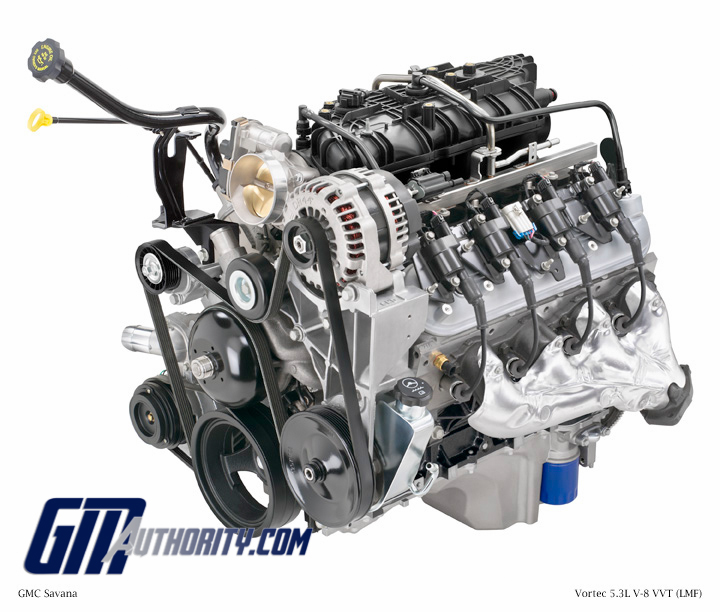Exploring the Vortec 5.3L V8: Power, Reliability, and Practicality
The rumble of a powerful engine, the satisfying surge of acceleration – these are experiences many drivers crave. And for many, that experience is embodied in the Vortec 5.3L V8. This engine, a staple in the automotive landscape, has powered countless trucks and SUVs, earning a reputation for its blend of power and dependability. But what makes this particular engine so enduring? Let's explore the nuances of this ubiquitous powerplant, delving into its history, capabilities, and potential drawbacks.
The 5.3-liter Vortec V8 engine, often simply called the 5.3 Vortec, isn't just a single entity. It represents a family of engines produced by General Motors. This engine family has evolved over time, with different generations featuring variations in design and technology. Understanding these differences is key to appreciating the engine's versatility and its enduring appeal in the automotive market.
Introduced in 1999, the Vortec 5.3 was designed to deliver a balance of power and efficiency. Its early applications were primarily in trucks and SUVs, where its torque and towing capacity were highly valued. Over the years, the engine underwent refinements, incorporating advancements like Active Fuel Management (AFM) and variable valve timing (VVT) to improve fuel economy and performance. These enhancements solidified the 5.3 Vortec's position as a workhorse, capable of handling demanding tasks while offering a reasonable cost of ownership.
One of the key reasons for the 5.3 Vortec's popularity lies in its robust design. The engine's relatively simple construction contributes to its durability and ease of maintenance. This simplicity, combined with readily available parts, makes it a popular choice for both everyday drivers and those who enjoy working on their own vehicles.
While the 5.3-liter Vortec engine has many strengths, it also has its share of known issues. One commonly reported problem involves the Active Fuel Management (AFM) system. This system deactivates cylinders under light load conditions to conserve fuel. However, some owners have experienced problems with AFM, including oil consumption and lifter failures. Another potential issue is the tendency for these engines to develop intake manifold gasket leaks. Understanding these potential problems allows owners to be proactive in addressing them and maintaining the longevity of their engines.
The Vortec 5.3 engine, despite its reported issues, offers several benefits. Its ample torque makes it ideal for towing and hauling. The wide availability of parts and relatively simple design contribute to lower repair costs compared to more complex engines. Finally, its proven track record of reliability makes it a popular choice for those seeking a dependable powerplant.
Advantages and Disadvantages of the Vortec 5.3L V8
| Advantages | Disadvantages |
|---|---|
| Good power and torque for towing and hauling | Potential issues with Active Fuel Management (AFM) system |
| Relatively simple design and readily available parts, leading to lower repair costs | Possible intake manifold gasket leaks |
| Proven reliability and long lifespan with proper maintenance | Can be less fuel-efficient than smaller, more modern engines |
Best Practices for Maintaining a Vortec 5.3L V8:
1. Regular oil changes with high-quality oil.
2. Addressing AFM issues proactively.
3. Inspecting and replacing the intake manifold gasket if needed.
4. Using quality fuel and fuel filters.
5. Monitoring coolant levels and addressing any leaks promptly.
Frequently Asked Questions:
1. What is the typical lifespan of a 5.3 Vortec? With proper maintenance, these engines can often exceed 200,000 miles.
2. What fuel grade is recommended? Most versions recommend regular unleaded gasoline.
3. What is Active Fuel Management (AFM)? It's a system that deactivates cylinders to improve fuel economy.
4. What are common signs of an intake manifold gasket leak? Coolant loss, rough idle, and white exhaust smoke.
5. What is the towing capacity of a 5.3 Vortec? It varies depending on the vehicle and configuration, but it typically ranges from 8,000 to 10,000 pounds.
6. Is the 5.3 Vortec a good engine? It is generally considered a reliable and capable engine.
7. What are some common problems with the 5.3 Vortec? AFM issues and intake manifold gasket leaks are among the most frequently reported.
8. How can I improve the fuel economy of my 5.3 Vortec? Proper maintenance, ensuring proper tire pressure, and avoiding aggressive driving can help.
Tips and Tricks for the 5.3 Vortec: Regular maintenance is key. Using quality parts and fluids can significantly extend the life of your engine.
The Vortec 5.3-liter V8 engine remains a popular choice for a reason. Its combination of power, reliability, and relative simplicity makes it a valuable asset for truck and SUV owners. While it's essential to be aware of potential issues like AFM problems and intake manifold gasket leaks, proactive maintenance and addressing these concerns promptly can ensure a long and productive lifespan for this workhorse engine. Understanding the engine's capabilities and its potential drawbacks empowers owners to make informed decisions about maintenance and operation, ultimately maximizing their enjoyment of this powerful and versatile V8. By embracing a mindful approach to ownership and staying informed about best practices, drivers can unlock the full potential of the Vortec 5.3L and enjoy its capable performance for years to come. Whether you're towing a trailer, hauling a load, or simply cruising down the highway, the 5.3L Vortec offers a dependable and satisfying driving experience.
Unlocking the power of good morning everyone a deep dive
The ardennes counteroffensive a pivotal moment in wwii
Unlocking the secrets of sherwin williams stock performance














